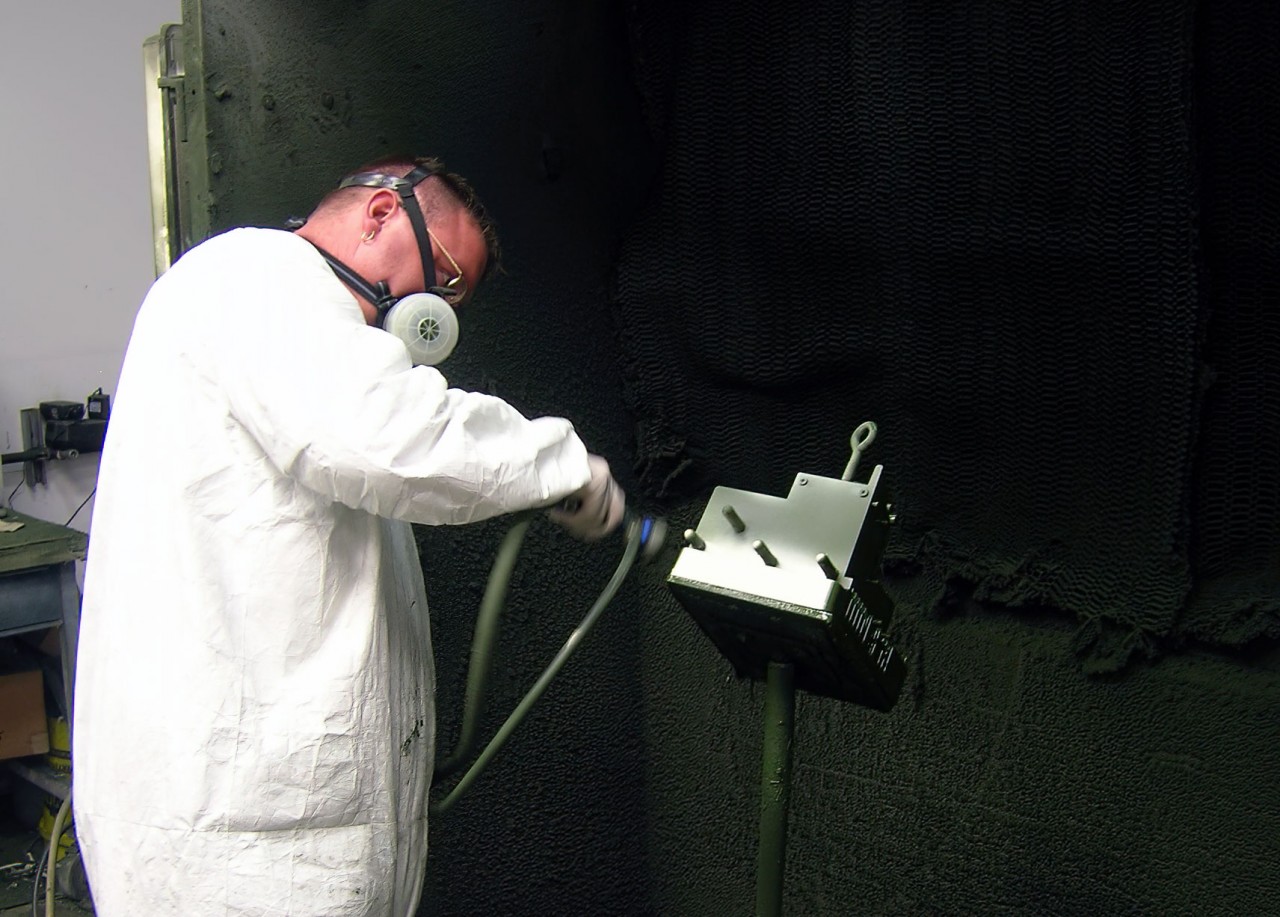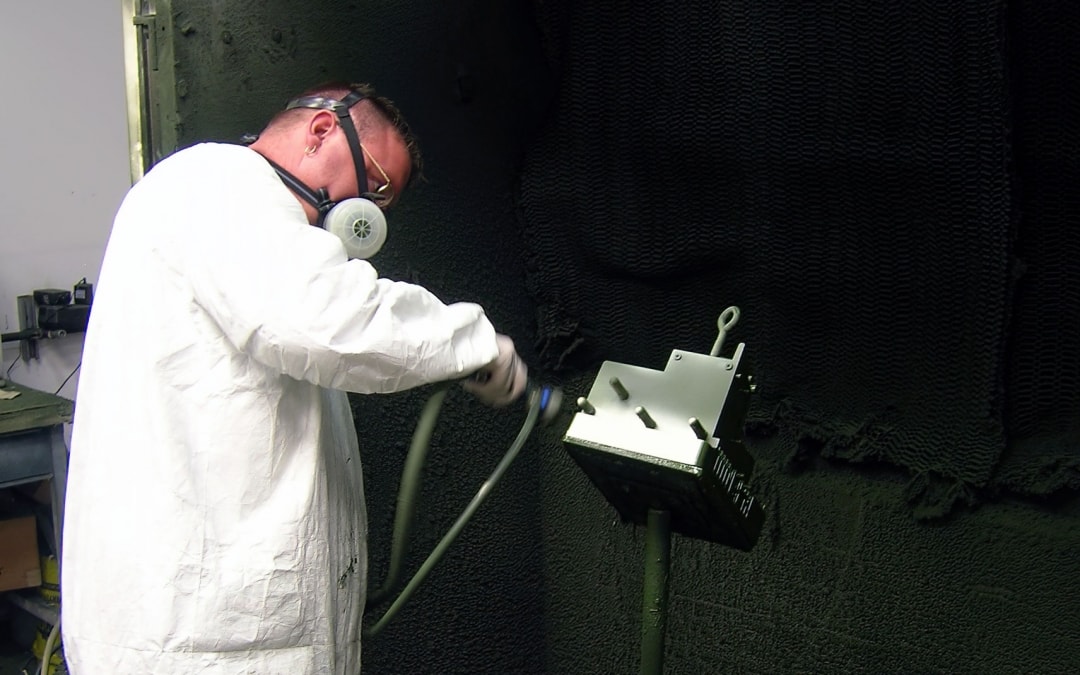Powdercoat Re-work and Re-Spray: Spray it Again, Sam!

You’re GOOD! But no matter how good you are (I hate tell you this), you are not perfect. Powdercoat re-work and re-spray is sometimes necessary. This may come as a surprise to some of you, but it’s true. Sooner or later, you will make a mistake. It is just that simple. So, how does that apply to powder coating? Well let me tell you…
Spraying a part once is by far the best way to finish powder-coated product. But, as I mentioned above, sometimes things happen, you make a mistake, and you have to re-work and re-spray the product. There are many reasons for re-work. This article will address some of those reasons, as well as some advice on how to prevent them. Bring in the usual suspects!
Light or heavy coverage, contamination, out gassing, bleed through, and surface defects are all reasons that may require you to rework a powder-coated part. Some of these defects are operator driven, some are line or equipment driven, and still others are material driven and, to a degree, out of your control. In any event, if a finished part does not meet the surface quality requirements of the customer, the product must be re-finished.
Light coverage is one of the most common reasons for re-work. No matter what powder you spray, if the powder coating film is light, usually less than 1-1.5 mils, the powder will need to be re-sprayed. In some cases, the powder itself does not have good opacity. Some yellow or orange powders will have difficulty covering a dark cast iron or hot rolled steel. Even though the film may be in excess of 3 mils, the color is not consistent, or looks cloudy. You may need to put 4 to 5 mills to get the part to look consistent. Some textures, wrinkles and hammertones will not separate and cure properly if the film build is too low. A manufacturers recommendation should be followed. Some powder formulations, such as polyurethanes, are semitransparent and may appear light even when applied to the proper thickness.
Prevention: Proper training and technique, good gun charge and part ground, slower line speed, good booth lighting.
Heavy film build can also cause problems that require powdercoat re-working and re-spraying. As film thickness increases, so does the propensity to cause orange peel. This condition occurs when the powder is too thick to flow and smooth out as it cures. Though some powder will orange peel at lower thicknesses, most orange peel occurs at higher thicknesses. Runs and drips occur when the powder is applied to an extreme thickness. Some epoxy powders can be applied to an excess of 125 mils without running, but most standard polyesters will run like the wind at 10-12 mils.
Prevention: Proper training and technique, proper gun adjustment, make sure parts are not hot or too warm from dry oven, make sure sprayers are not over spraying.
Picture framing is also a problem when film builds are too high. As flat products are sprayed, the electrostatic attraction of the powder causes the powder that misses the edge of a flat part to wrap around and adhere to the backside of the part. When the other side of the part is sprayed, the same effect occurs, causing a double coating at the edges of the part. This double coat appears as a heavy film build around the perimeter of the part, giving it a picture frame appearance. If the coating is thick enough there will be a drip on the lower edge of the part as well.
Prevention: Proper training and technique, correct gun tip, reduce gun charge.
Contamination of a part can take several forms. If the contamination is under the coating, then it can be assumed that the part was not cleaned or prepared properly, or that there was contamination in the powder that was applied. Dirt and metal chips not removed in cleaning can appear as bumps in the coating. Older powder can have “seeds” or small clumps of hard powder that do not melt and flow with the rest of the coating. Fisheyes are a sure sign of oil or lube on the surface that pooled out as it was heated and caused the powder to form a small dimple with no coating at its center.
Prevention: Spot-check parts prior to coating, screen older powder, increase washline temperature or adjust chemical concentrations then complete powdercoat re-work and re-spray
If the contamination is on the surface of the part, then is was introduced after the coating was applied. There may have been built up powder on the conveyor line that fell on the part. There may have been contamination in the oven that landed on the part as it was curing. It may have been a gun spit or release of built-up powder on the gun tip. We have had fuzzies from cotton wood trees land on parts and cause rejects. I have even seen bugs land on powder-coated parts and leave tracks in the coating. Talk about fossil footprints!
Prevention: Keep ovens and conveyors clean. Keep booth ceilings clean (inside and out). Train sprayer to watch for gun spits. If seasonal bugs or plants can affect product quality, take action to reduce their potential impact.
Out gassing can appear to look like fisheyes, but under magnification the difference is obvious. Aluminum castings may have bubbles of gas that did not escape when the metal solidified. Poor quality castings will have a sponge-like cross section if you cut them open. The gas trapped in these cavities is subject to my favorite physics law, The Ideal Gas Law, which states that pV=nRT, where p is the pressure, V is the volume of gas, n is the number of molecules of gas, R is the gas constant (look it up if you need to), and T is the temperature.
For simplicity’s sake, what is important is that as T increases, so does pV. As the powder-coated part goes into the oven and is heated from room temperature to somewhere around 400F for curing, the volume of gas trapped in the cavities expands, increasing the pressure. If you have this problem, you can be sure that my second favorite law, Murphy’s Law, will come into play. The gas will reach a pressure high enough to leak out of the casting and cause a small bubble in the coating just as the powder is ready to finish its cure. The result is out gassing craters in the coating that, unlike fisheyes, has coating in the center of the crater.
Prevention: Aluminum castings can be degassed at a temperature above the intended cure temperature to minimize the effect of out gassing. Anti-gas primers can also be used to minimize the effect.
Though out gassing is most common with aluminum castings, it can also be present with hot rolled steel. Untreated hot rolled steel also has a propensity to out gas. During the forming process, hot rolled products such as angle, channel, pipe, bar stock and plate, form a scale on their surface. This scale has gaps, cavities and under cuts that trap air. The powder coating melts and flows over the scale, trapping the air underneath. As the temperature increases, the air expands ala pV=nRT and you have…out gassing of hot rolled steel.
Prevention: Use pickled and oiled steel or sandblast hot rolled product to remove the scale. Anti-gas primers can also be used to minimize the effect.
Many fabricators use magic marker to mark the stock they are welding together. That is fine for them, but bad for the finisher. In most cases, a black magic marker line will bleed through a light-colored powder coating every time. Once this happens, the only way to remove it is to sand off the coated area and the marker down to bare metal and re-coat the entire part. The marker will bleed through coat after coat unless it is removed. This is a simple yet costly problem for powder coaters. It seems that a missed marker never happens on a part to be coated black.
Prevention: Clearly put in your quotes “customer to remove all magic marker”. Then check any part that has marker on it thoroughly and remove any marker with solvent.
Surface defects are usually in the form of scratches, gouges, dents, and cracks that are in the product before it is prepared for finishing. It is easy to tell if a surface defect was there before finishing as it will be under the coating! Surface defects are usually best repaired before the part is coated. Some surface defects can occur after the part is coated, such as a sprayer brushes against a part leaving a bare spot, or a part bumping into another part or part of the cure oven. If the defect is not discovered until the part is finished, the customer should be contacted to decide how best to repair the damage. If the defect is limited to the coating, then a respray or touch may be the only solution.
Prevention: Incoming quality inspection, training of line loaders, training of sprayers.
There are many considerations to take into account if and when a re-work or re-spray is required. For example, intercoat adhesion becomes a concern when re-coating epoxy. Fingerprints and hand marks can show through if coated parts are handled with soiled hands prior to re-coating. Parts re-washed in a washline can have water marks if they are not rinsed with R/O or DI water after cleaning. Some timers it is difficult to get a good ground on a coated part. The charged powder does not always adhere to the parts evenly. Charge marks can occur because the part is already insulated with plastic, so the charge builds up a capacitance. Most newer guns have a re-coat mode, and parts can also be sprayed warm to overcome some of these problems. In any event, an ounce of prevention can be the difference between spraying it once, and spraying it again…Sam!
